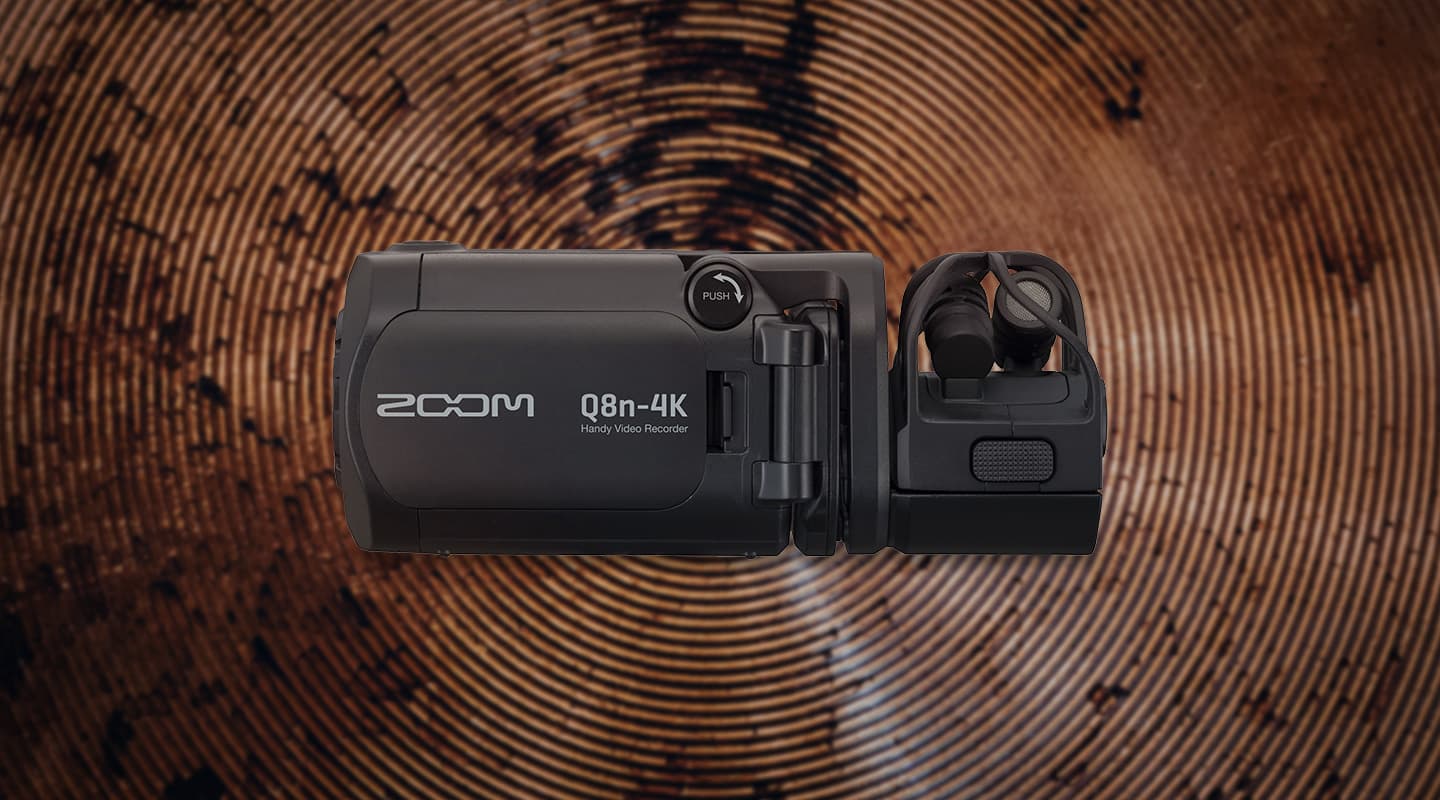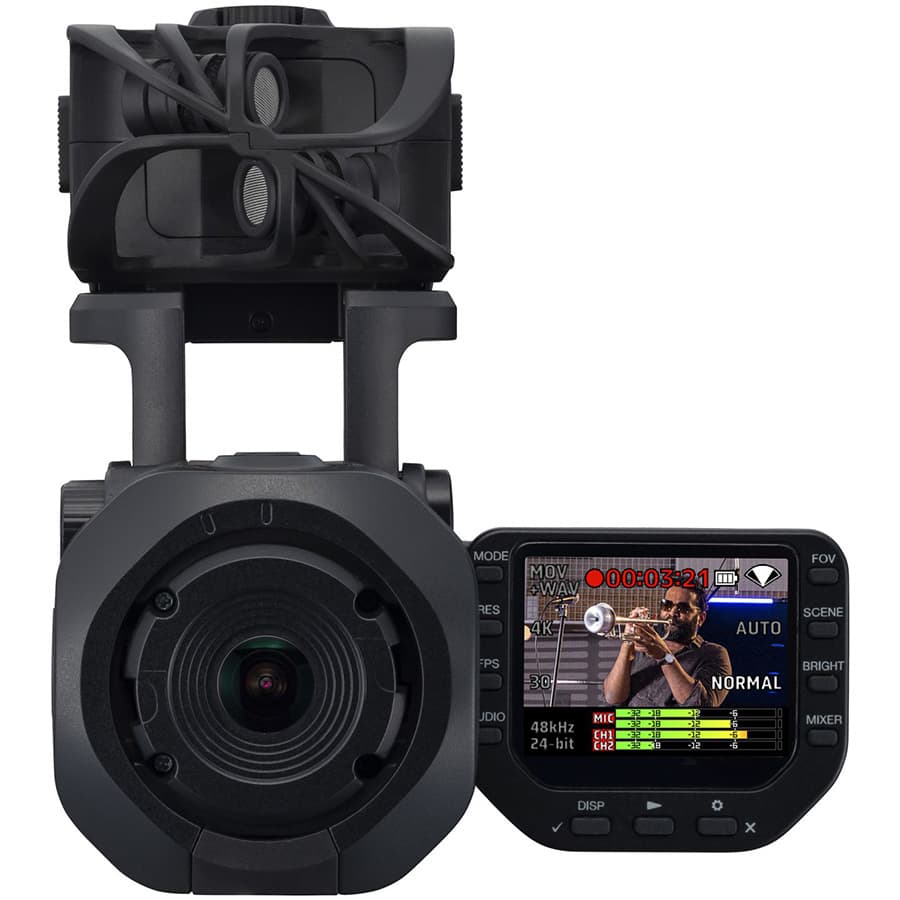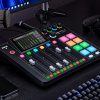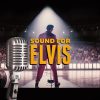
Review: Zoom Q8n-4K
The content creation era has given rise to various ‘do-it-all’ products, and the Zoom Q8n-4K is no exception. We put its versatility to the test.
Creating slick looking and sounding video is astonishingly easy nowadays. That’s largely thanks to the deluge of products designed to meet the demands of today’s ‘content creation’ generation. In such products, versatility is king. The more functionality crammed into a device the better.
My (all pleasant and positive) experiences with Zoom have been around the Japanese company’s audio products: handy recorders, field recorders, mics, mixers, podcasting devices, even multi-effects guitar products. Imagine my surprise, then, when I received the Zoom Q8n-4K and discovered the presence of a built-in camera – I responded much like if McDonalds served me a fried rice – “stick to what you know!”
As it turns out, Zoom has a whole ‘Q’ family of video-capable products, so my outburst only betrayed my ignorance. The Zoom Q8n-4K is one such all-in-one gadget that wears enough hats to make it a content creator’s dream. It can record 4K video, four channels of audio, including two XLR inputs, or act as a webcam or USB audio device. Zoom’s slogan – ‘We’re for creators’ – couldn’t be manifested more perfectly in a product.
LOOK AROUND
The Q8n-4K is a tidy little device and feels compact in the hand. Initialising the camera for action requires first flipping the X/Y microphone up 90°, then flipping the screen out 90° to face you if you’re videoing yourself. Reverse the sequence to pack it down into a satisfyingly small footprint, a lot like those transforming robot toys you had as a kid. Note the screen can only swivel horizontally – no up/down rotation. On the back of the camera behind the screen is the Power button, microSD card slot, Pad and Phantom toggle switches for the XLR audio inputs, and three buttons to engage the Mic, Ch1 and Ch2 audio in recordings.
The unit can run off the included BT-03b Li-ion battery or accept power through USB-C. The battery charges when plugged into a computer. Use the tripod thread underneath to sit the unit atop a full-size tripod or one of those googly-legged desktop tripods – it’s definitely light enough.
Helping you navigate the Q8n-4K are 11 small rubber buttons surrounding the LCD screen. Most of these buttons toggle through a selection of options (e.g. Mode cycles through four video and/or audio recording options, Res cycles through 4K/1080p/720p, FOV steps through five angles from Wide to Telephoto) and this makes the unit instantly user friendly. Changing a setting is no more complicated than pressing the right button a couple of times until you’re on the setting you want. Of course, this also means if you want to change settings in a fine grain fashion, you can’t. For example, image exposure is set using the Scene and Bright buttons: the first offers five pre-programmed ‘looks’ (Auto, Indoor, Outdoor, Concert Light, Night) and the latter is the equivalent of exposure compensation on a camera (High, Normal, Low). No shutter speed, ISO or white balance settings in sight – which some will hate, and others will love.
SOUND ADVICE
Four discrete channels of audio in a camera is a luxury to people who, like me, usually shoot on cameras with only a single mini TRS input. When you combine that with Zoom’s modular options to switch up the built-in mic, plus the fact that a Q8n-4K can also act as a webcam or USB mic, there’s actually a lot of flexibility here.
Let’s start with the built-in mic. Included with the Q8n-4K is the XYQ-8n Mic Capsule with two fixed opposing cardioid mics to deliver a wide and accurate stereo image in front of the camera. In use, the mics perform beautifully. They capture plenty of detail and extend surprisingly low in the frequency range. They may be a little light on mids to my ears but are flattering enough to produce a satisfactory sound on a few guitar and vocal recordings I made. The manual gain pot is something I appreciate too.
But if X/Y isn’t your favourite stereo mic configuration, don’t worry. Zoom’s got your back with a range of interchangeable mic capsules which slot right onto the Q8n-4K. There’s the XAH-8 with two rotatable mics to go from X/Y to A/B, the VRH-8 Ambisonic capsule for 360° immersive audio, MSH-6 for mid-side stereo recording, SGH-6 shotgun mic for a tight frontal pickup, SSH-6 mid-side shotgun for mono-compatible stereo recordings, and the EXH-6 with two XLR inputs.
But wait, there’s more. The Q8n-4K has internal DSP which can be applied to any of the four audio channels, including a high-pass filter up to 240Hz, compression, limiting, levelling, de-essing and gating. Unfortunately these processors can’t be manipulated, they can only be turned on and off. They all sound perfectly acceptable and work well as functional tools rather than creative ones. Gain settings will determine how hard these processors work. With tasteful settings, the compressor lent a nice radio-like punch on a vocal dynamic mic while the limiter does a good job reining in level spikes. The De-Esser is rather heavy-handed and skims off a lot of high end even when the source isn’t particularly sibilant. The leveller was perhaps my favourite of the lot in that it worked seamlessly and transparently to smooth out the dynamics on spoken word.
NEED TO KNOW
Zoom Q8n-4K
Handy Video Recorder


THE SPECIAL TWO
Now to the star of the show (at least for the audio enthusiasts) – those dual XLR inputs. Note these aren’t the combi connectors with a jack input in the middle, so TRS or TS inputs will need conversion to XLR if you want to feed them into the Q8n-4K. However the two connectors will accept both mic level and line level signals to work with a heap of potential sources. From powering up a shotgun mic to accepting a feed straight out of a mixer or a keyboard, it’s hard to overlook the utility of a pair of ‘proper’ audio inputs on a little camera like this. A respectable 55dB of gain is available to pull signal from connected microphones. I was impressed how clean the gain is. Cranking it nearly to the max on low-output dynamic mics resulted in low-noise, detailed recordings. Phantom power can be set to 12V, 24V or 48V.
Cool things happen when you make use of all four audio channels. Record a live show with the immediacy of direct outs from the mixer but mix in crowd ambience from the X/Y mics. Plug a vocal mic into Ch 1, a guitar mic into Ch 2, and dial up a little room reverb from the X/Y mics for a polished acoustic guitar and vocal track. The Mixer screen lets you set levels, effects and pan for each channel so you can balance the sources on the way in. On-screen audio metering is very clear and it’s easy to activate/deactivate audio channels using the rear buttons.
Audio recording quality can go up to 96k/24-bit (not the endless dynamic range of the 32-bit field recorders Zoom has more recently released). Monitor audio in real-time with the 3.5mm headphone output. Depending on the selected Mode you can use the Q8b-4K to record multi-channel audio only, stereo audio only, audio and video together, or audio and video separately.
VIDEO IMAGING
The Q8n-4K overdelivers in the audio department. Onto the video capability, and it’s a slightly different story. As aforementioned, the menu system means you have limited control over exposure and the overall image – which isn’t a bad thing necessarily, but it’s a limitation nonetheless. Additionally I found that the 1/2.3-inch sensor struggled to produce rich and detailed video with any real sense of depth. A sub-1-inch sensor camera typically generates a more two-dimensional image than a micro-four-thirds or full frame model, so the underwhelming quality is partly inherent. Poor performance in low light is another typical trait of smaller sensors and the Q8n-4K is no exception in dim to moderately lit environments – a lot of noise was present in video recordings and it didn’t go away like I hoped even as I splashed more and more light into the scene. Outdoor shots with plenty of sunlight looked better. The camera comes with a lens hood so you have no excuse.
Bear in mind the lack of image stabilisation. ‘Handy’ doesn’t mean you should shoot handheld. The Q8n-4K is happiest on a tripod. I love that the lens is capable of a near-fisheye 150° field of view. It’s a look that works a treat in small band rooms or rehearsal spaces to add a grungy wide perspective in a multi-camera shoot.
As a webcam, the Q8n-4K is a breeze to setup and incorporate into a live streaming or self-recording workflow. Once you plug it into your computer via USB-C you’ll be prompted with a screen asking whether you’d like to use the Q8n-4K as a USB webcam, USB mic, or SD card reader. Webcam mode saw the Q8n-4K appear as a selectable camera in QuickTime, OBS, or any video call platform. This also makes it incredibly easy to pipe mic or line level audio via the Q8n-4K’s XLR inputs directly into a live streaming platform or other software.
When you want to preview video on a bigger screen the micro HDMI output has you sorted. Frame rate options are 24/25/30fps.
FINAL THOUGHTS
One thing’s for sure – the Zoom Q8n-4K can do a lot in a small package. And if you’re after a jack-of-all-trades product, then there’s a high chance it’ll be a perfect content creation machine for you. Even though I am not blown away by the video quality, I could still see myself using the Q8n-4K to produce content where production efficiency matters more than a pristine image. For example, filming quick snippets of a song idea to share with your fanbase in the form of YouTube Shorts or Instagram Stories. Maybe its role is to be a personal portable recorder for grabbing sound and video bites of musical sketches or ideas with yourself or a band. Take it to live shows for a reliable set-and-forget capture of a performance, and while you’re there, plug in a direct feed from the desk for superior audio. And I like the idea of the Q8n-4K being an extra angle in a multi-camera live streaming scenario especially if it means you can switch to that epic wide angle shot now and then.























Can this be used in conjunction with a mixer board, like a Rodecaster pro?